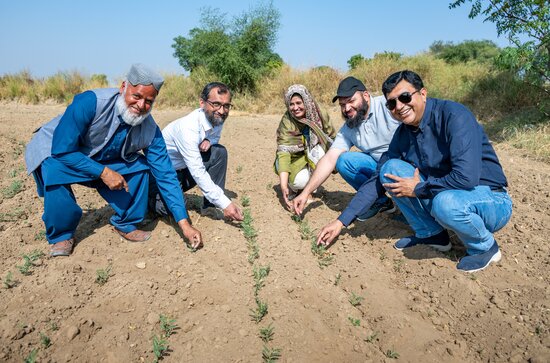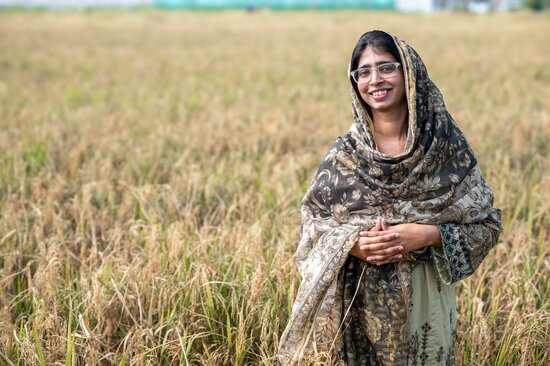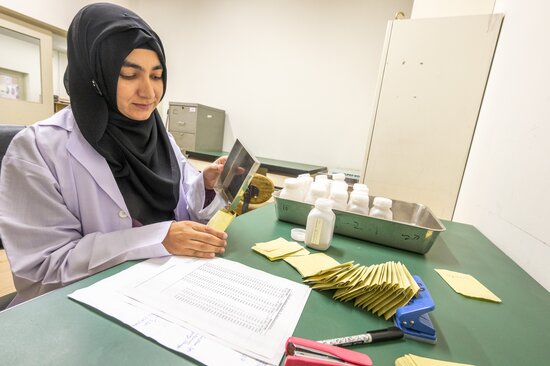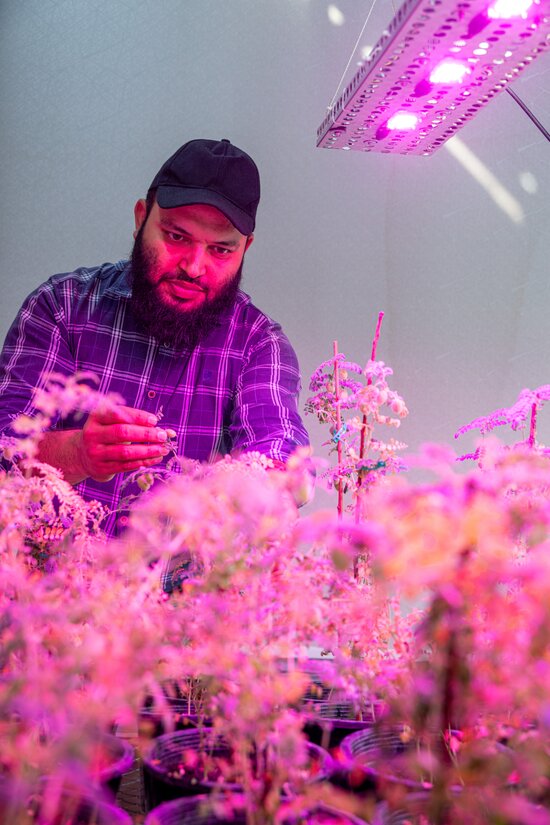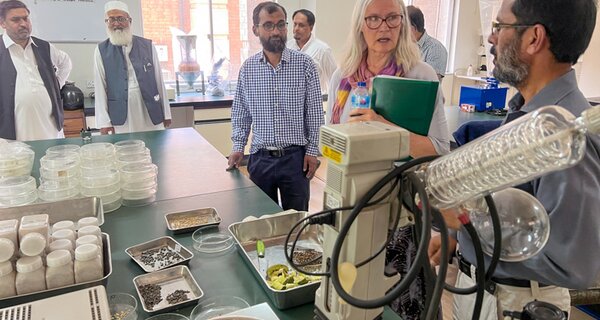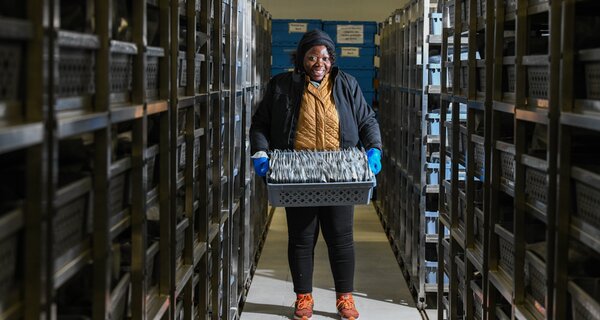From Genebank Shelves To Farmers’ Fields In Pakistan
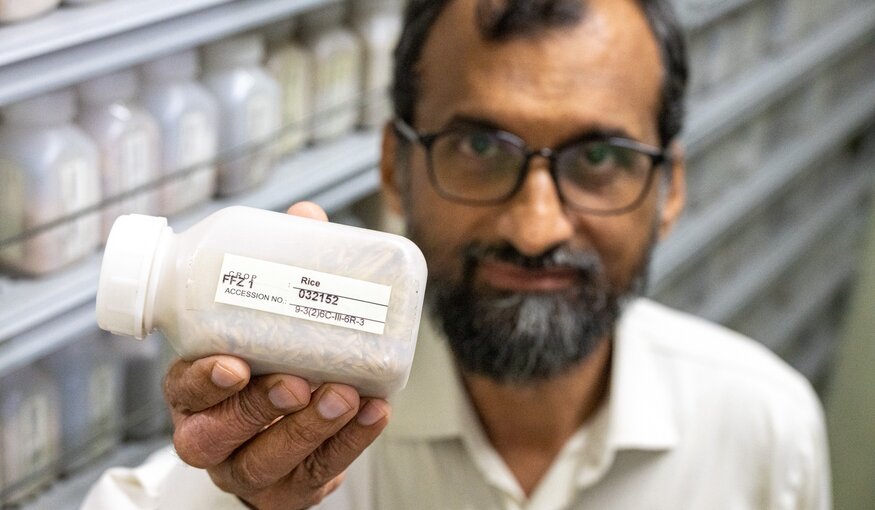
9 April 2025
Asif Javaid ran his finger across a row of plastic bottles containing rice seeds, checking a number on his phone. He paused at one bottle and checked again.
“Here’s the one – it has an amazing story,” said the manager of the National Genebank of Pakistan, pulling out the bottle labelled FFZ-1. “Developed in China, safeguarded in the Philippines, shared with Pakistan and now possibly ready for release as a variety to farmers across the country.”
FFZ-1, a rice seed sample also known as Accession Number 032152, is one of nearly 10,000 samples the genebank distributes each year to researchers and breeders throughout Pakistan and globally.
“A genebank isn’t a museum,” said Asif. “We conserve seeds so that crops can be improved.”
Pakistan has conserved seeds in its national genebank at the Plant Genetic Resources Institute (PGRI) since 1993.
“We’ve conducted more than 150 collecting expeditions in Pakistan for field crops, horticultural, medicinal and aromatic plants and crop wild relatives,” he added. “We now have more than 43,000 samples from 480 species.”
Pakistan is the fifth most climate-vulnerable country in the world. It will become increasingly dependent on the genetic diversity in its national genebank – as well as other genebanks around the world – to develop the climate-resilient crops of the future.
Through the Biodiversity for Opportunities, Livelihoods and Development (BOLD) project, the Crop Trust supports the National Genebank of Pakistan and others like it to better manage, conserve, document and back up the crop diversity they safeguard.
A 2022 review highlighted the genebank’s success in distributing samples. But in the years since, Asif and his team have gone even further – stepping up community outreach, raising awareness about crop diversity and actively promoting the use of their expansive collection for crop improvement across Pakistan and beyond.
“Pakistan’s national genebank is playing a crucial role in safeguarding the country's remarkable agricultural biodiversity. Through the BOLD project, we have witnessed the unwavering commitment of staff. They worked together to address many challenges – aging infrastructure, inadequate equipment and dwindling resources – to improve efficiency and enhance their effectiveness in conserving crop diversity,” said Nelissa Jamora, Monitoring and Evaluation Manager at the Crop Trust.
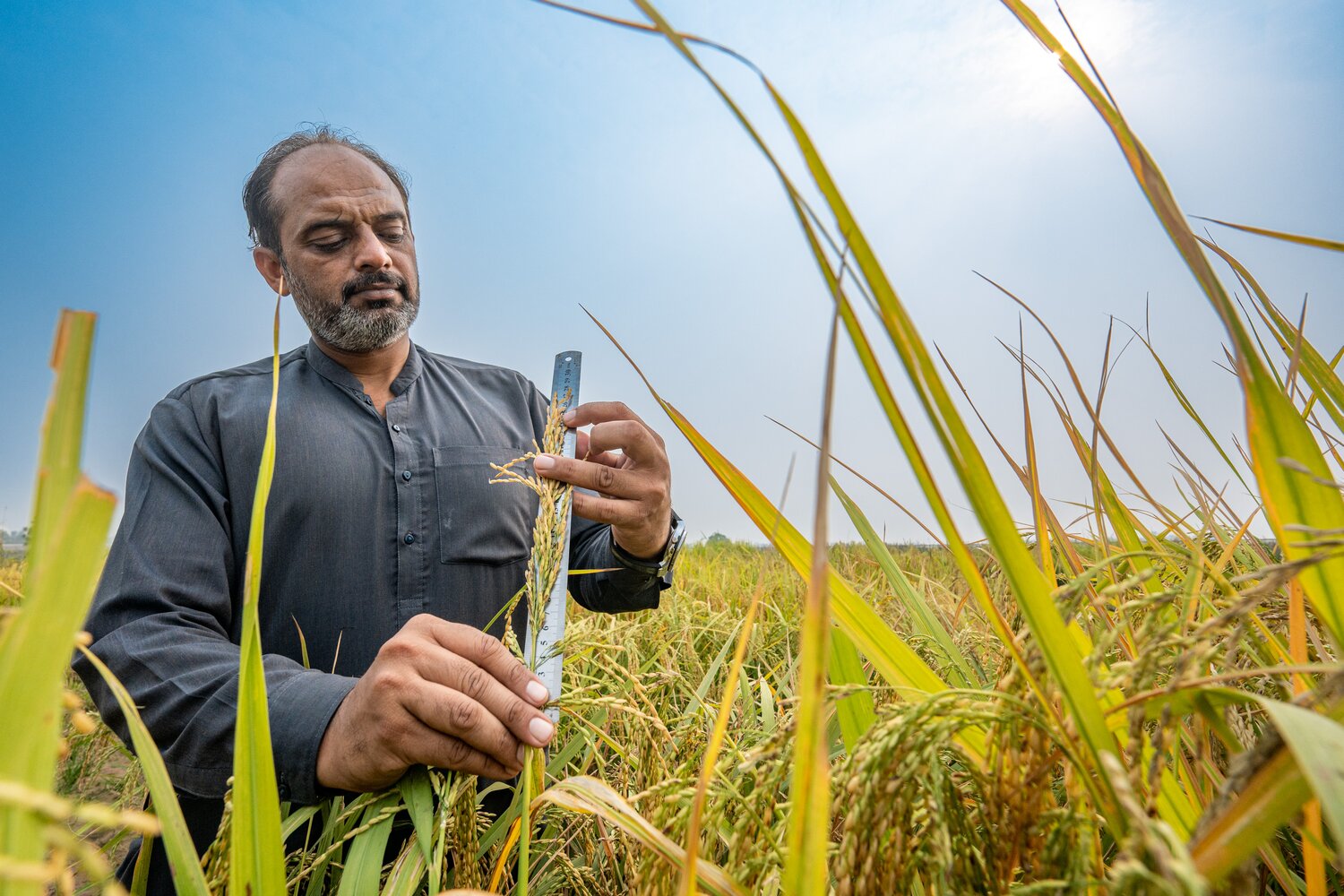
Rizwan Nazir, a lab attendant at the Plant Genetic Resources Institute, helps characterize rice accessions for the National Genebank of Pakistan in the NARC fields in Islamabad. Photo: Michael Major/Crop Trust
Spreading the Word
Asif and his colleagues work hard to ensure that breeders and researchers know about the crop diversity in the genebank.
Each year, policymakers, researchers and students visit the National Agricultural Research Center in Islamabad. The genebank is a highlight. Asif makes sure that visiting delegations get a fun and informative tour to raise awareness of the genebank’s work.
Outside of Islamabad, PGRI organizes workshops and seminars across the country, bringing in local researchers, seed companies and farmer associations.
The news has reached national universities. More than 150 PhD and 400 MSc studies have used samples from the genebank.

Team members of the Rice Research Program, Crop Sciences Institute of the National Agricultural Research Centre in a field of NARC-Rice-1 being harvested. Photo: Michael Major/Crop Trust.
Growing Demand for Diversity
“The awareness we created has led to growing demand for genebank material each year,” said Asif. “We now distribute around 10,000 seed samples annually to plant breeders and researchers for crop improvement.”
One frequent user is Shahid Riaz Malik, pulse program leader at Pakistan’s Crop Science Institute of the National Agricultural Research Center (NARC).
“We received 250 samples of chickpea from the genebank,” said Shahid. “After characterization, we narrow them down to a few, say five to 10 lines – and eventually two to three lines that get into our breeding program.”
The descendent of those genebank samples has already reached yield trials and could soon be released to farmers as a blight-resistant variety. Shahid’s team recently returned to evaluate 200 more chickpea samples.
“The success of any breeding program relies on genebank samples,” said Shahid. “Without this genetic diversity, we can’t develop new varieties with different traits that are suitable for the diverse agro-ecological zones of Pakistan.”
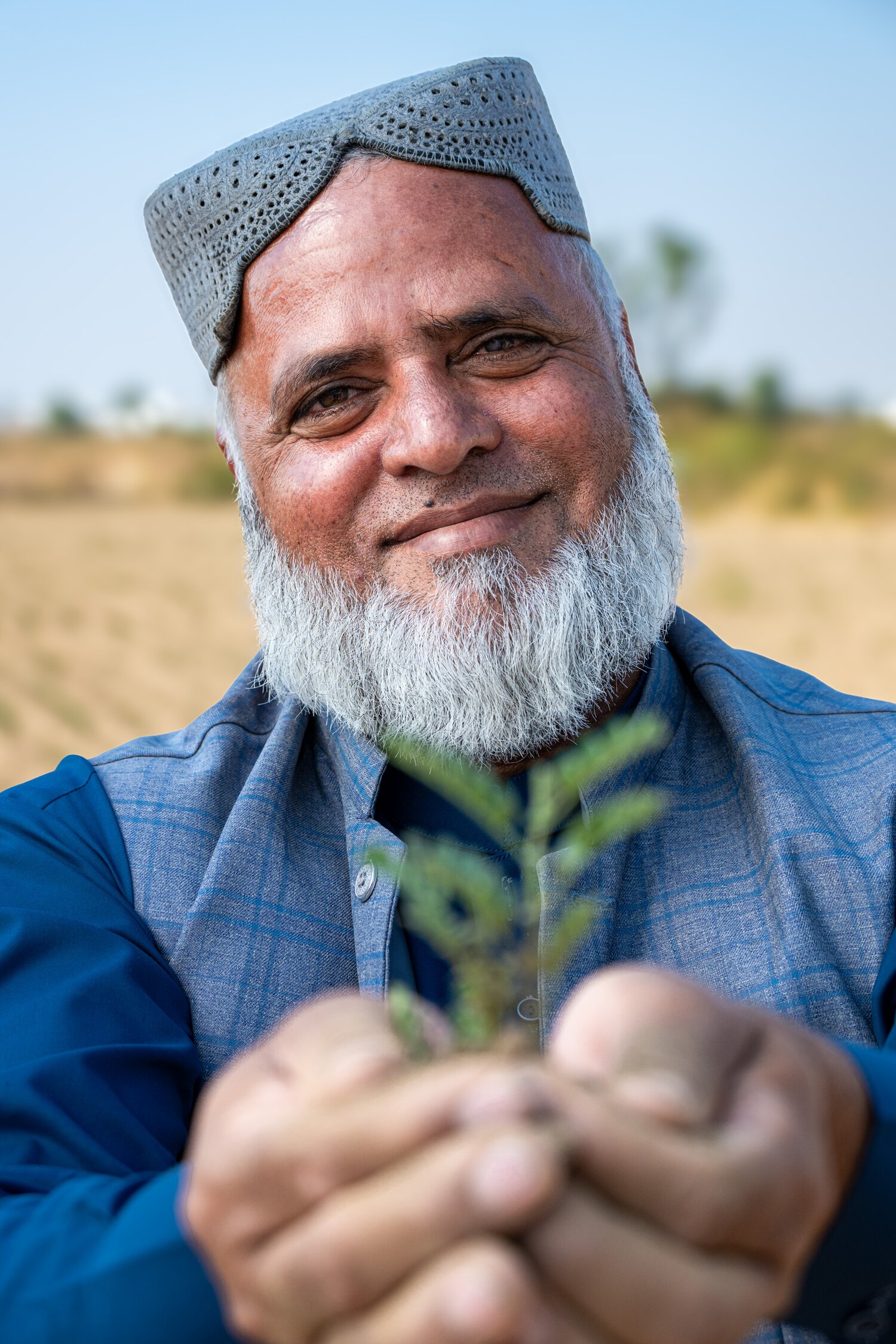
Farmer Muhammad Arif of Kot Sarang holds a blight-tolerant chickpea he is testing in his fields. Breeders acquired samples from the National Genebank of Pakistan to develop new varieties of chickpea. Photo: Michael Major/Crop Trust
Rice from China to the Farmers of Pakistan
The story of FFZ-1 is a prime example of how breeding programs rely on genebanks for success.
It was developed in 2008, by the Chinese Academy of Agricultural Sciences (CAAS), in partnership with the International Rice Research Institute (IRRI) and AfricaRice. It is a rice variety that delivers high, stable yields with fewer inputs under tough environmental conditions. CAAS sent it to the IRRI genebank in the Philippines for safekeeping.
Years later, Abdul Rehman, a Pakistani scientist working with IRRI, brought FFZ-1 to Pakistan’s national genebank for conservation and potential evaluation.
“In 2019, we acquired 82 rice accessions from the national genebank,” said Faiza Siddique, a rice breeder with NARC’s Crop Science Institute. “One of those was FFZ, and it stood out.”
After field trials, the team embraced it by renaming it NARC-RICE-1. It proved to be a high-yielding, disease-resistant variety with strong tolerance to the stresses that rice farmers in Pakistan face, such as rising temperatures and erratic rainfall. It outperforms many of the rice varieties grown in the country.
Following trials in different locations, NARC-RICE-1 entered two years of National Uniform Yield Trials.
"It outperformed two check varieties by 3.74% and 3.30%,” said Faiza.
After approval by the Variety Evaluation Committee, NARC-RICE-1 is awaiting final sign-off from provincial seed councils before release to farmers.
For Asif, success stories like FFZ-1, now NARC-RICE-1, also known as the genebank’s Accession Number 032152, and the blight-resistant chickpeas are powerful proof that the genebank’s work goes far beyond conservation. It’s helping create climate-resilient crops and strengthening Pakistan’s future food security.


